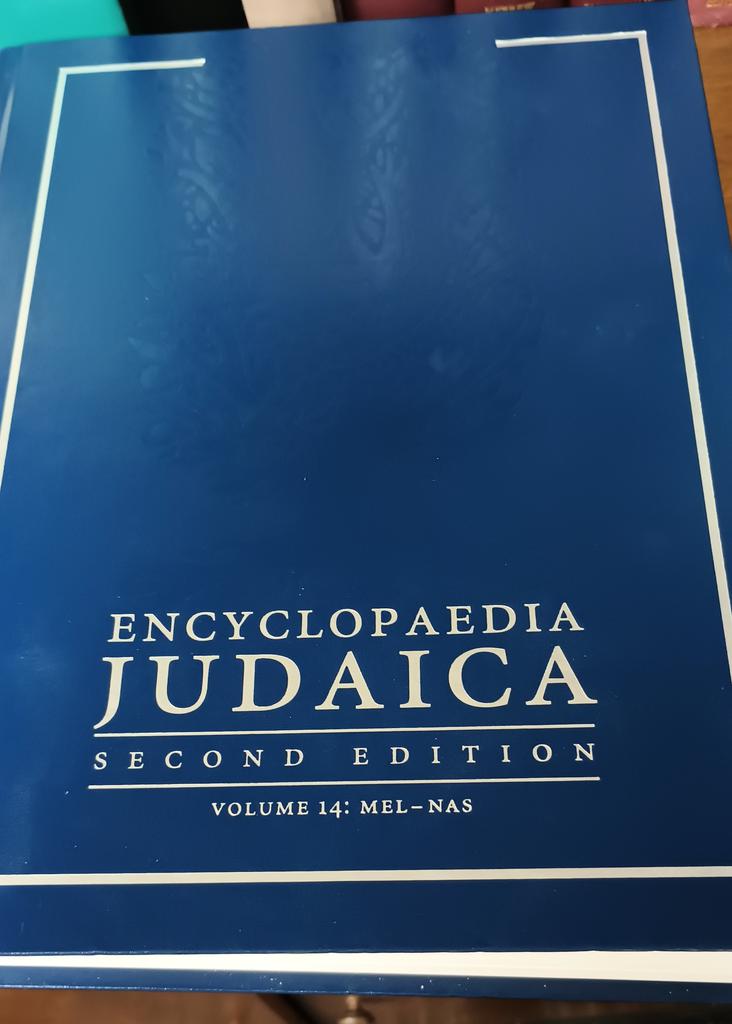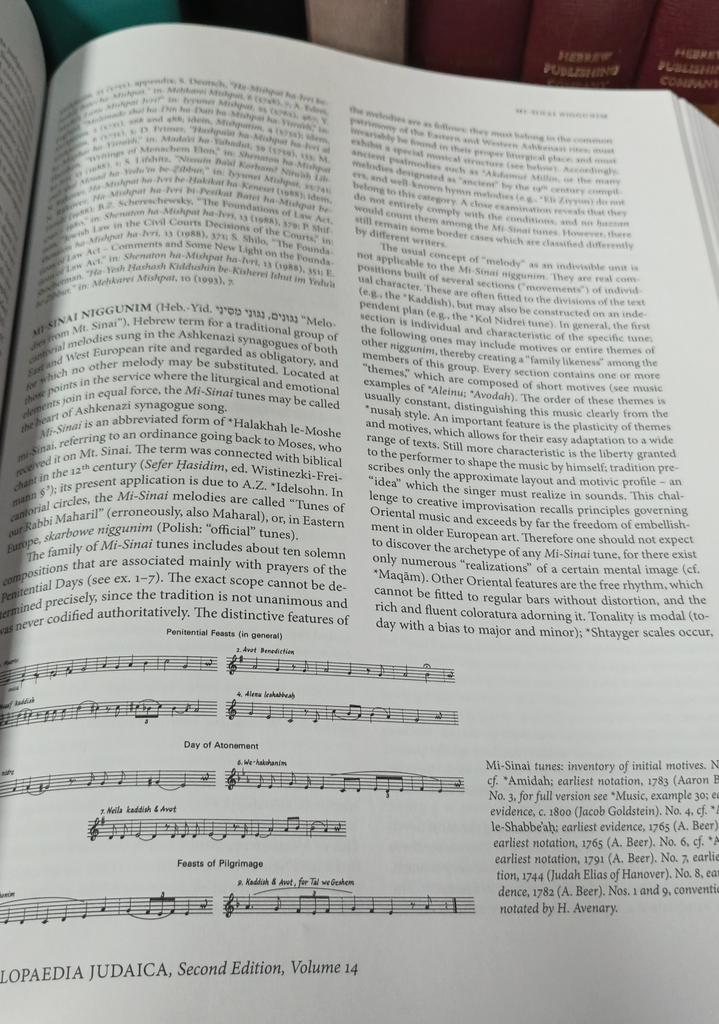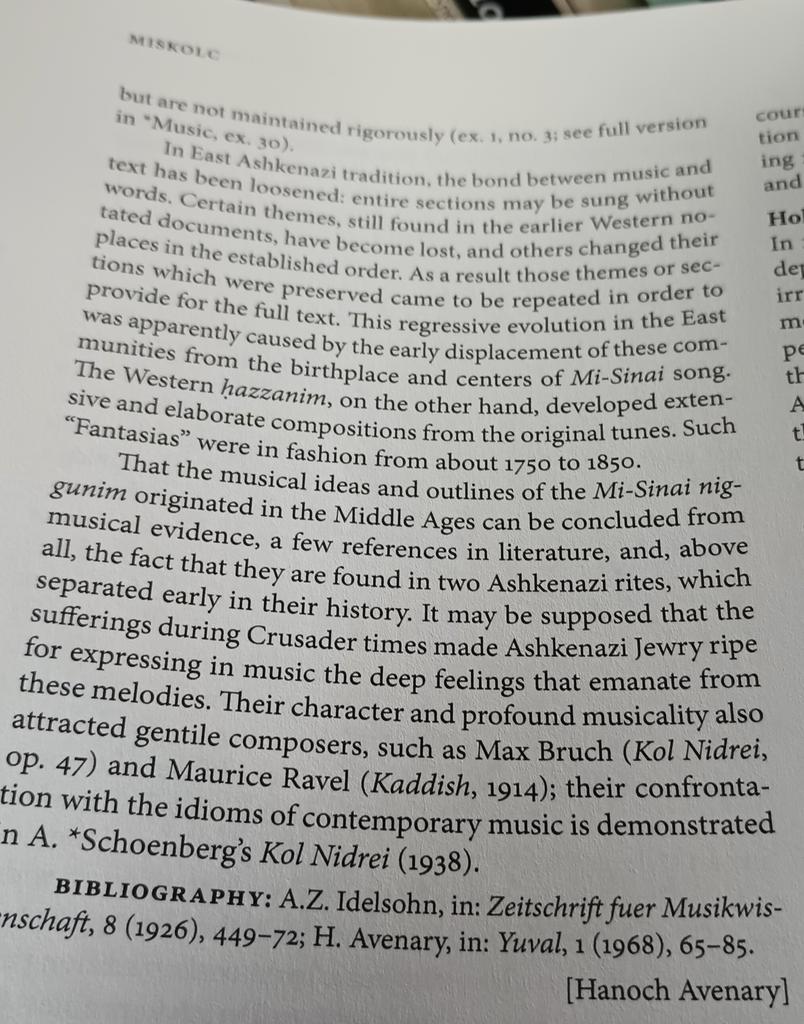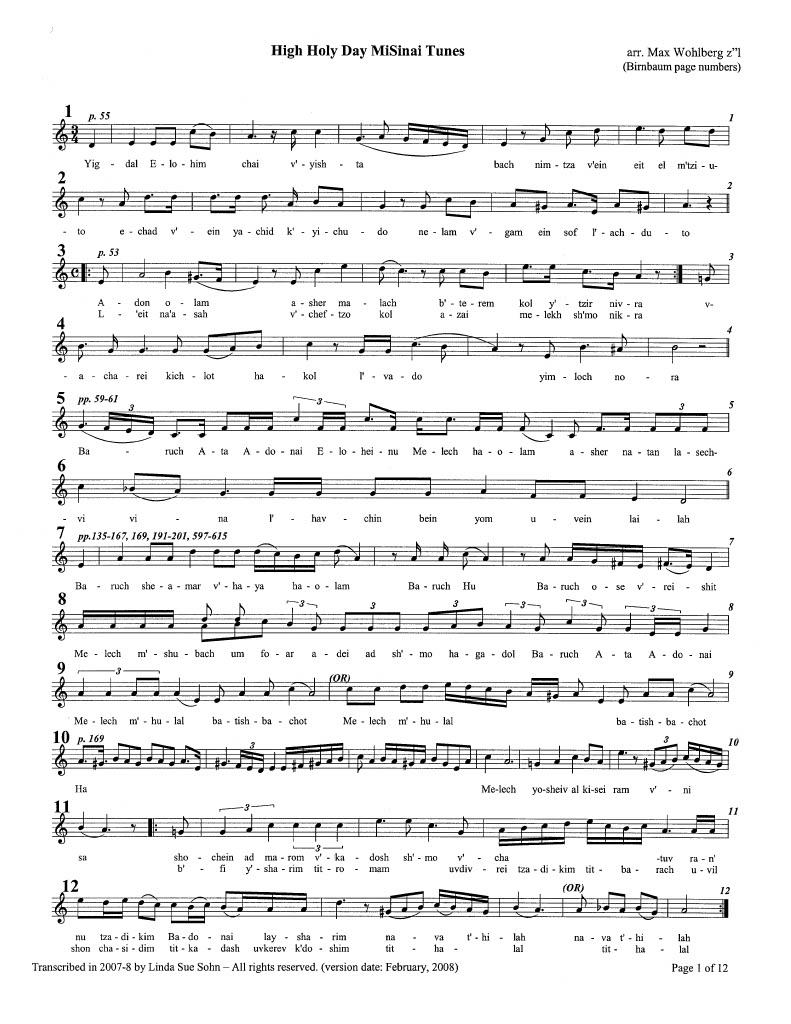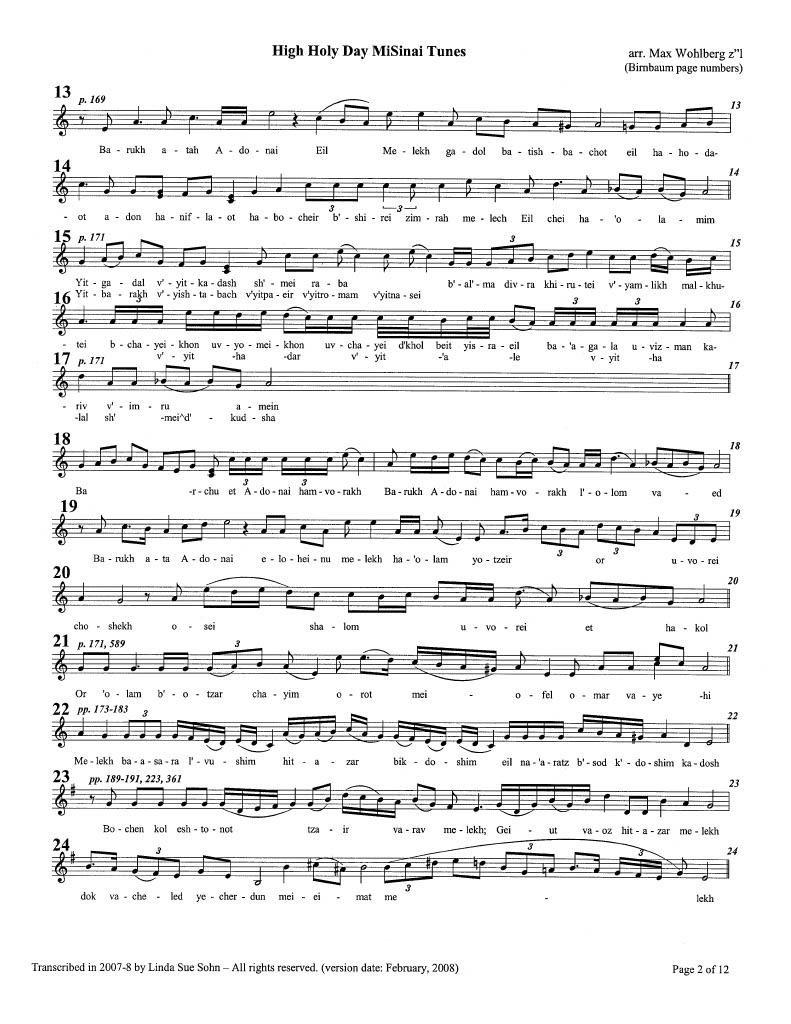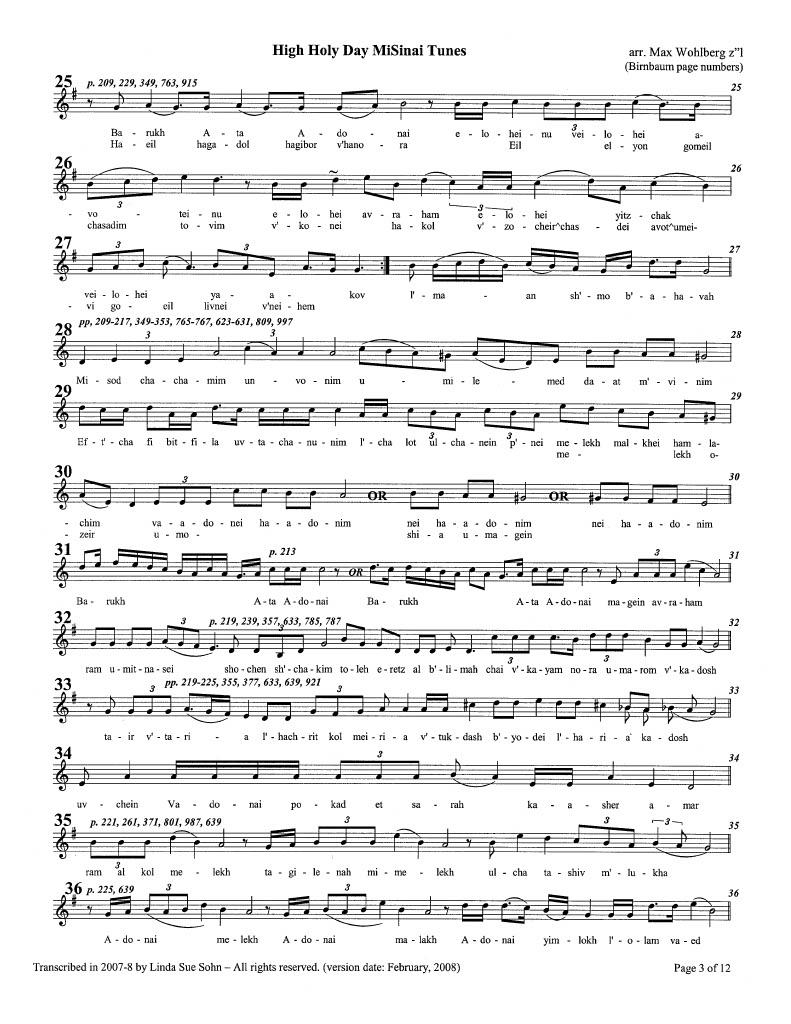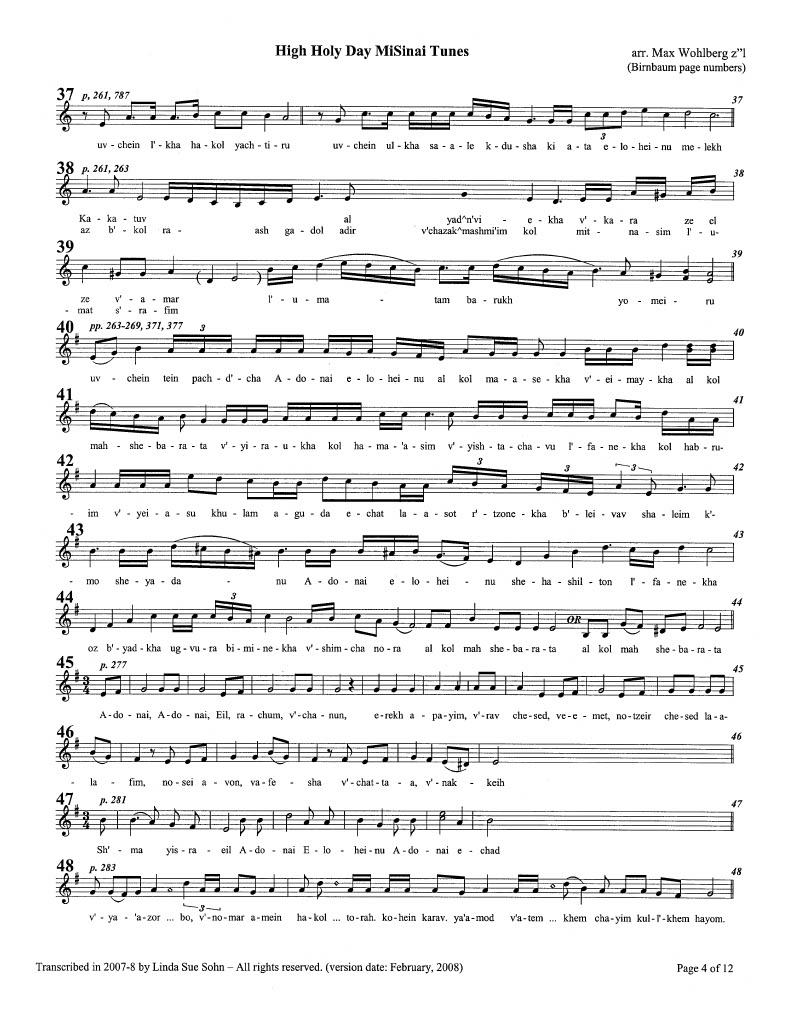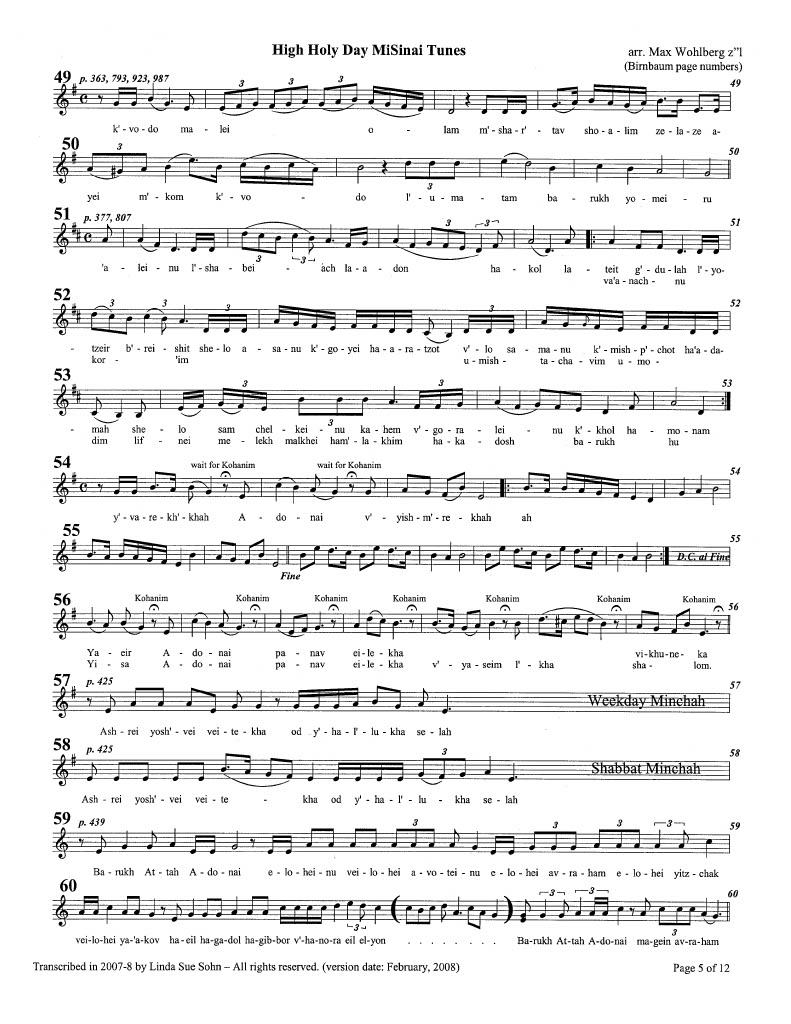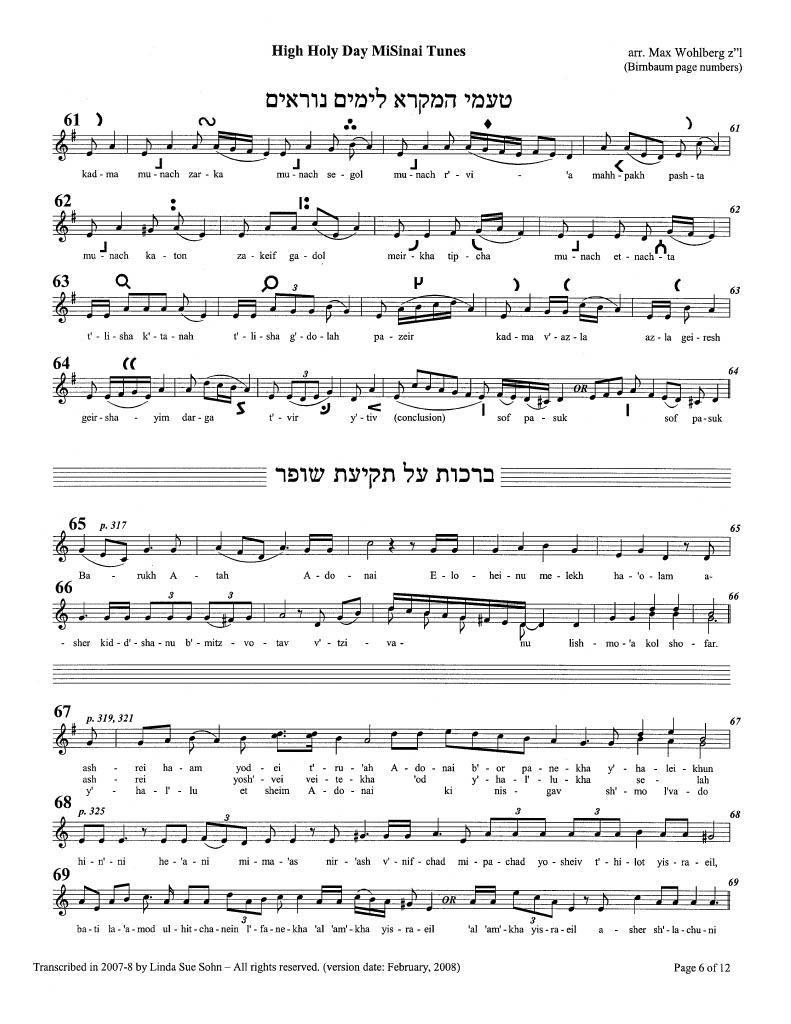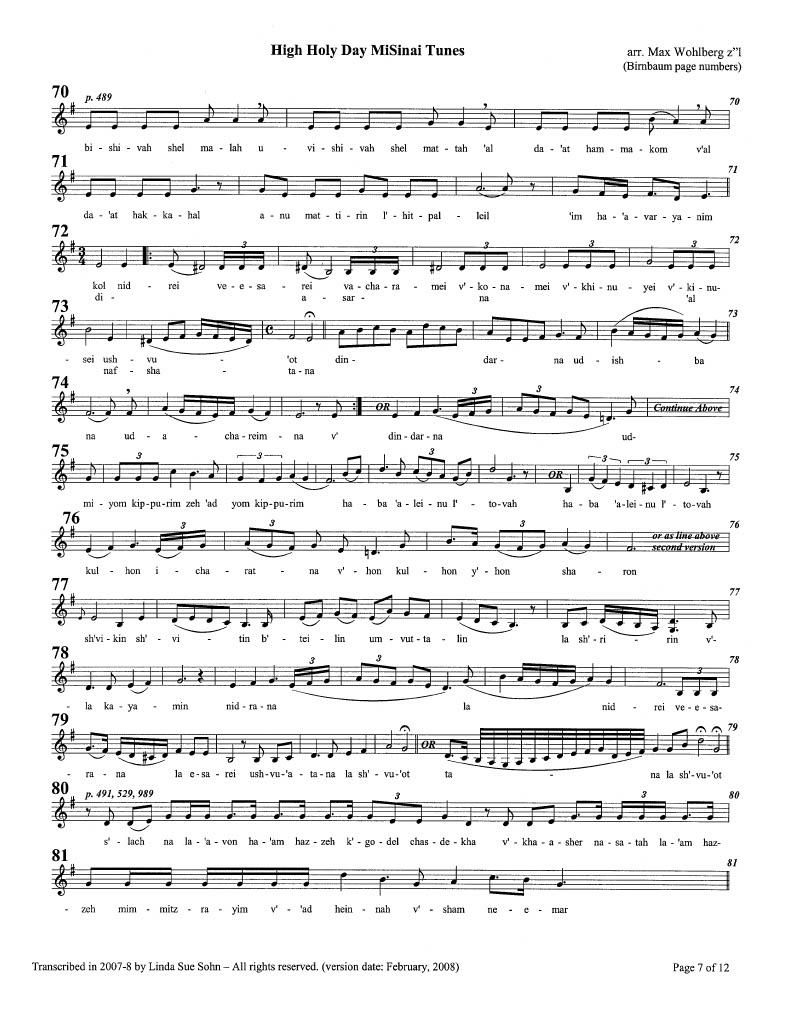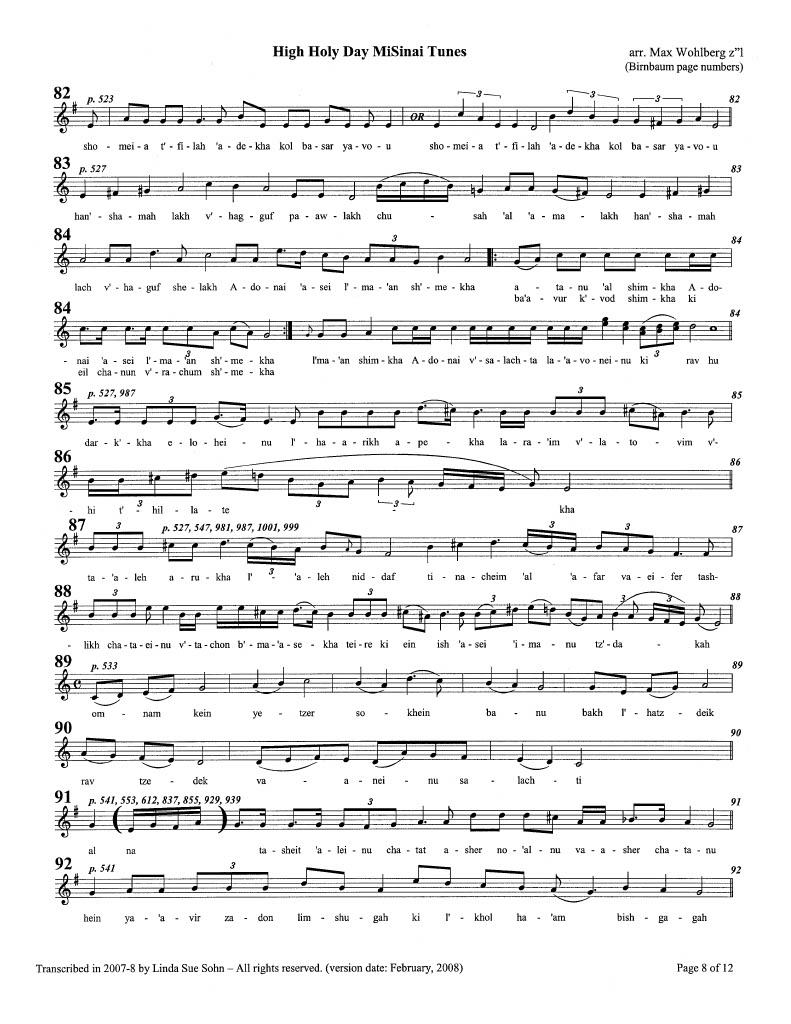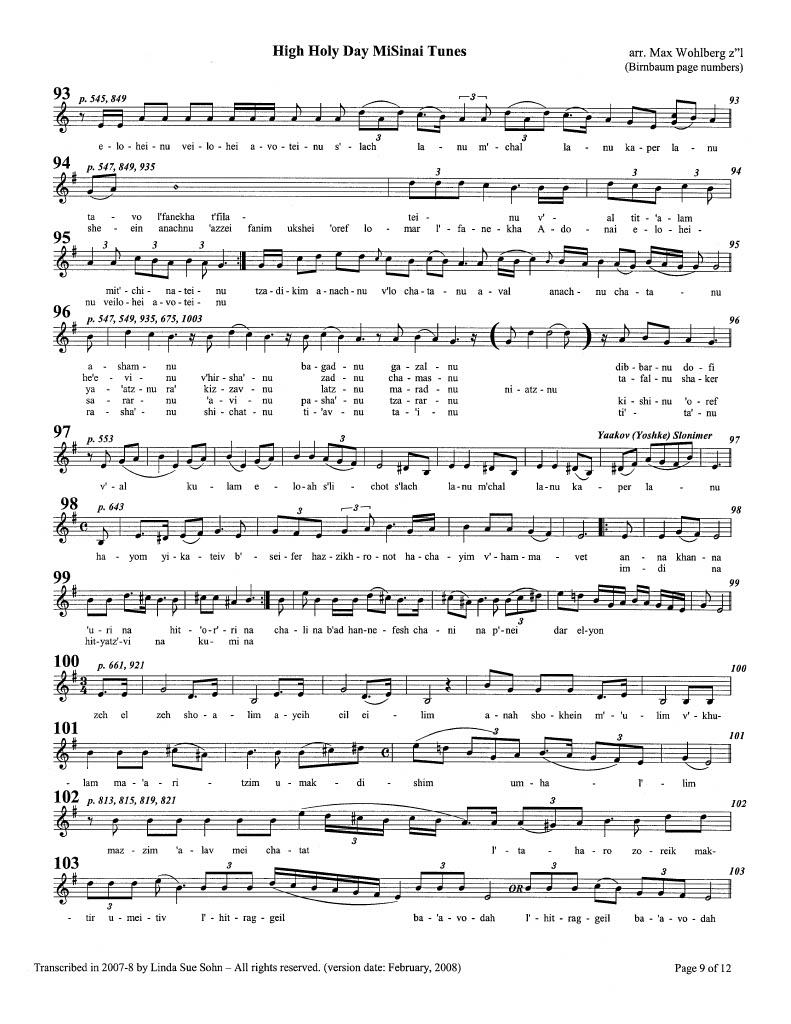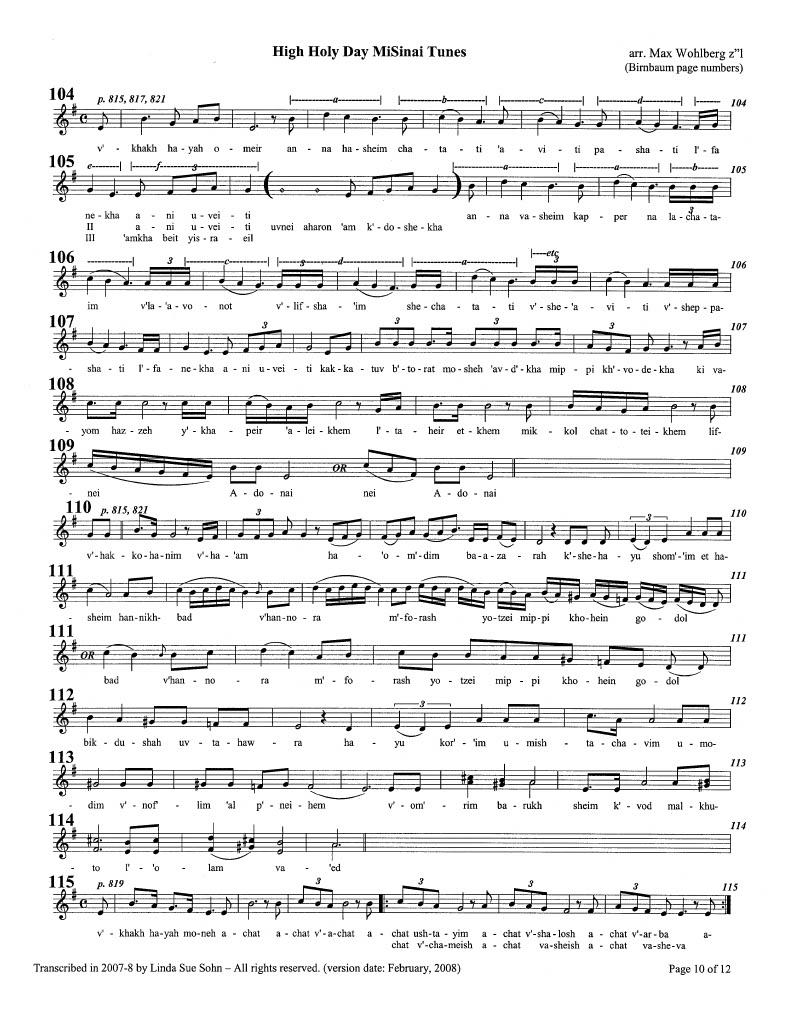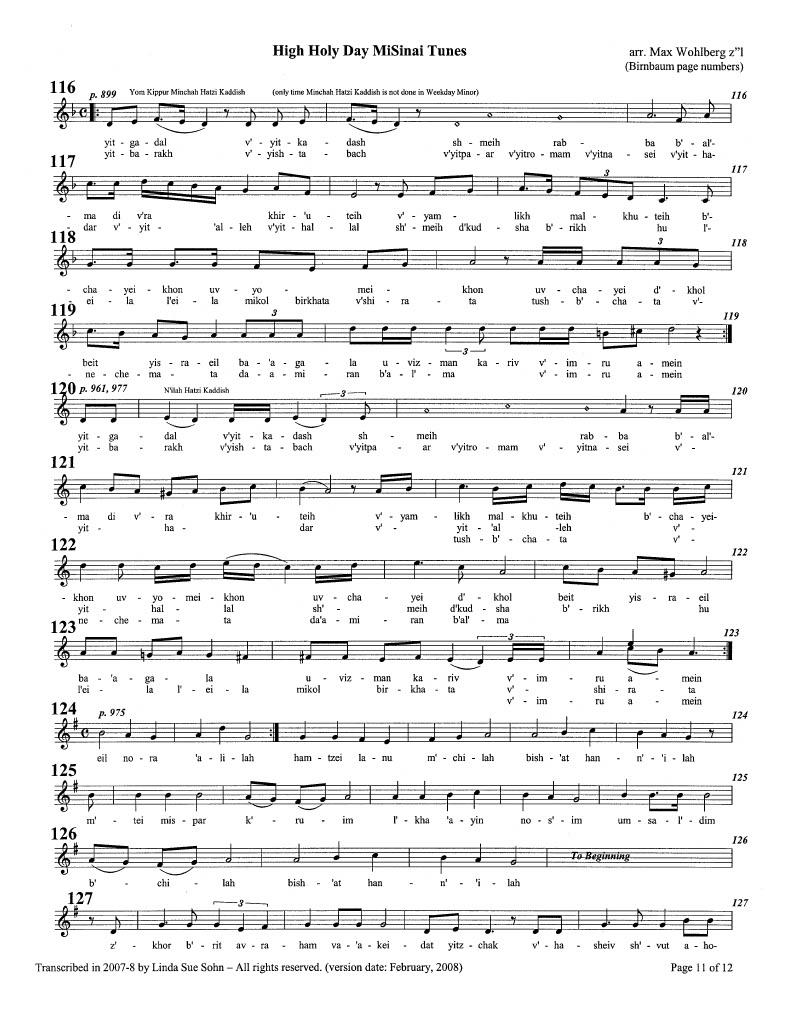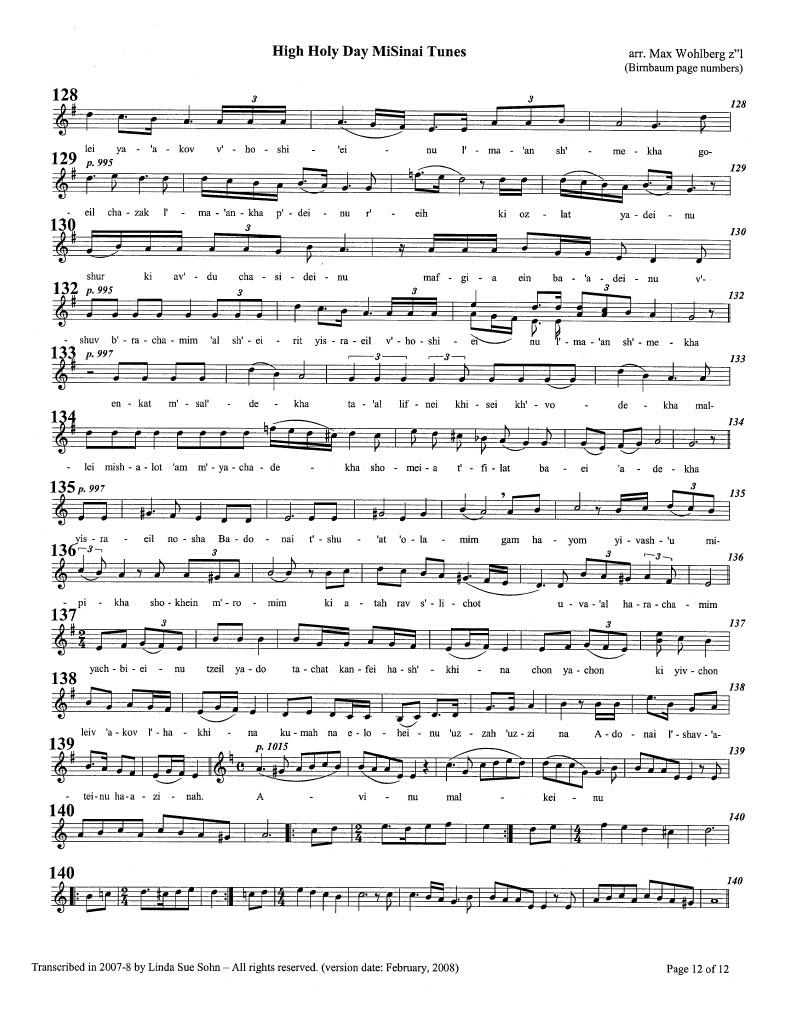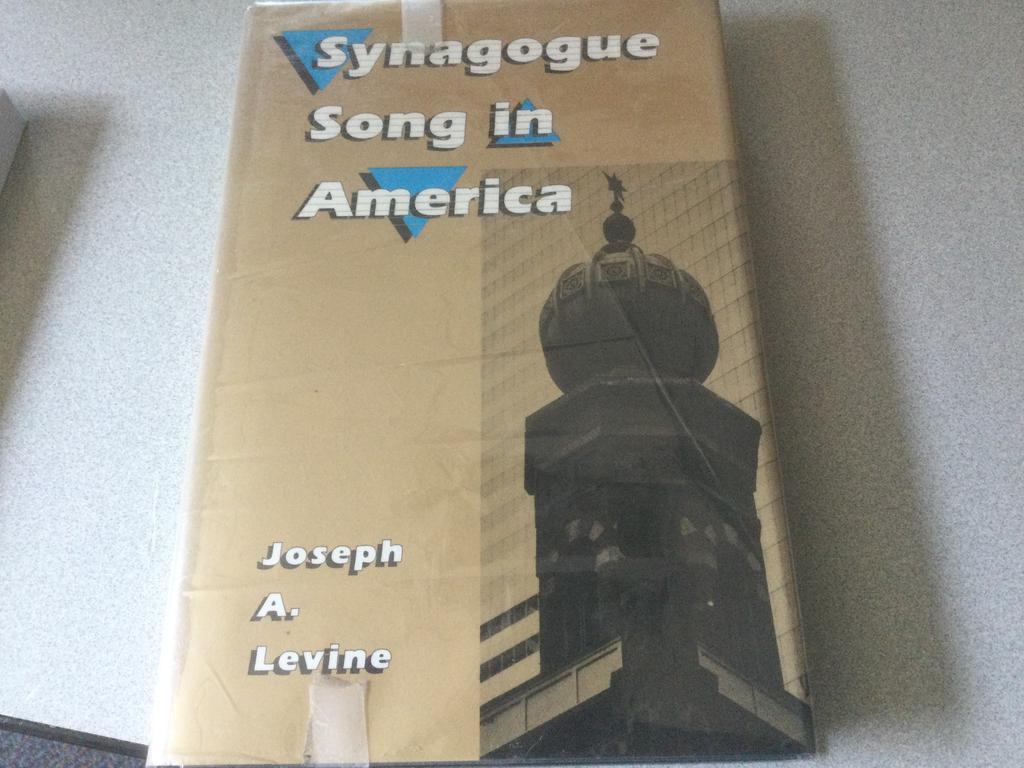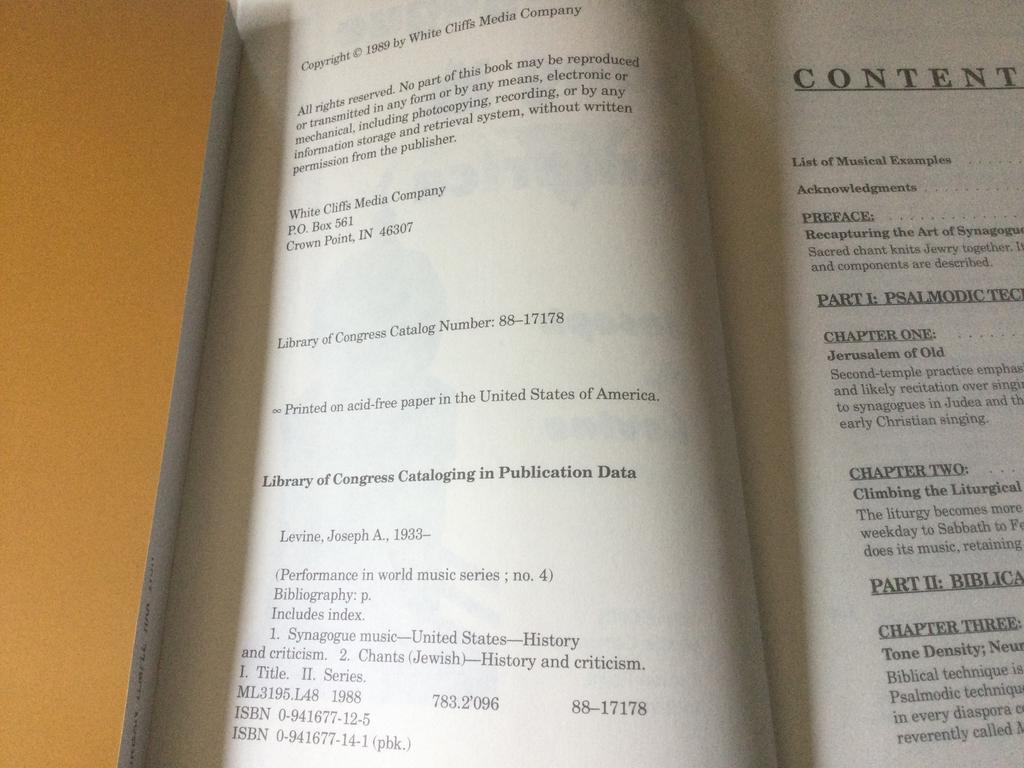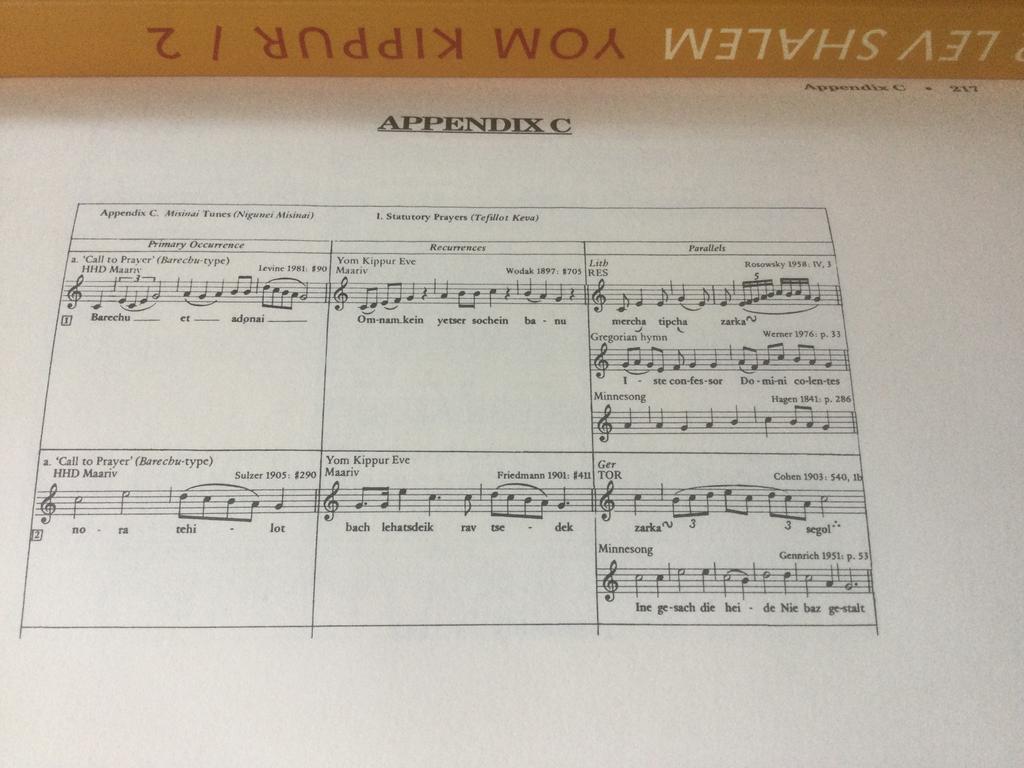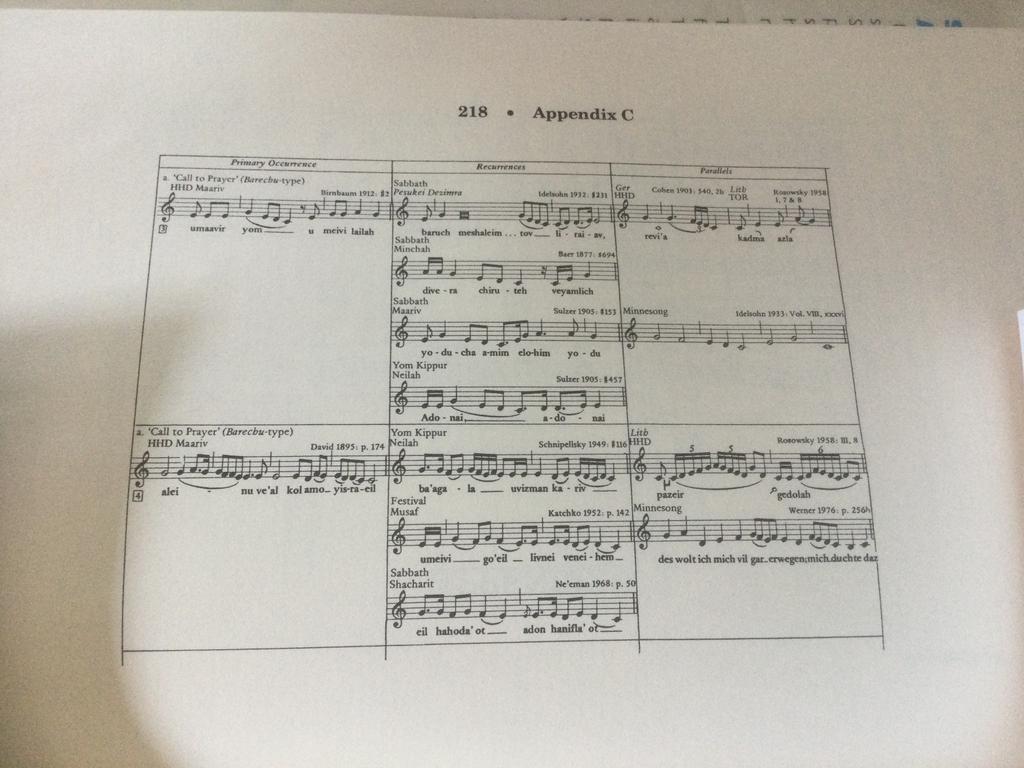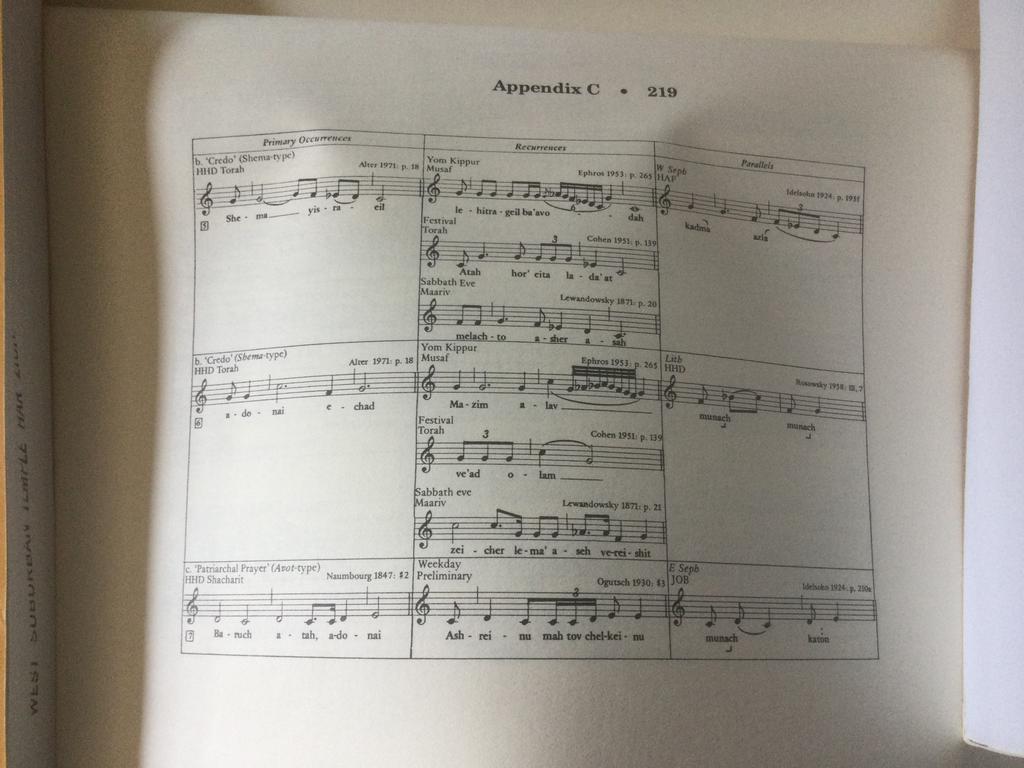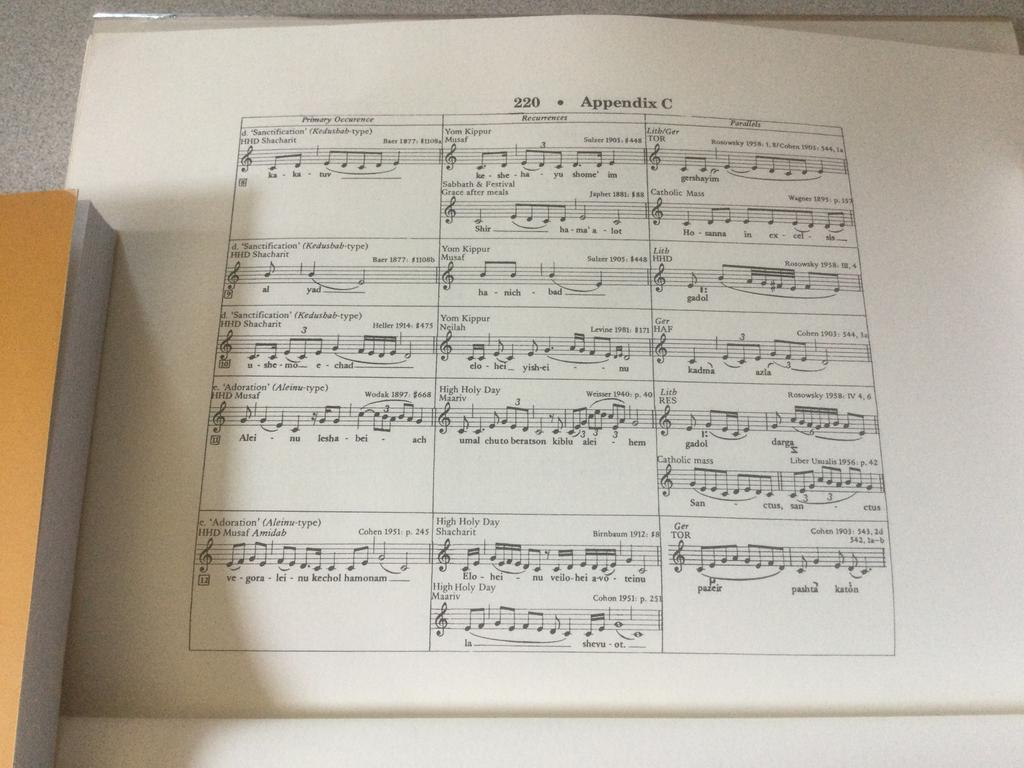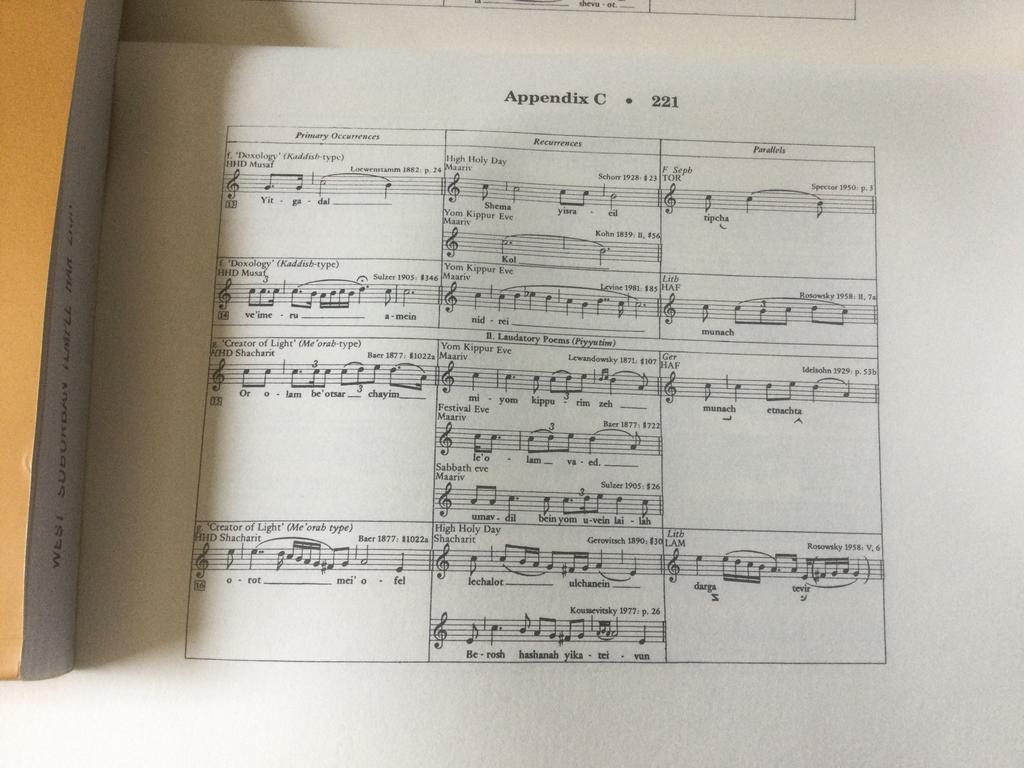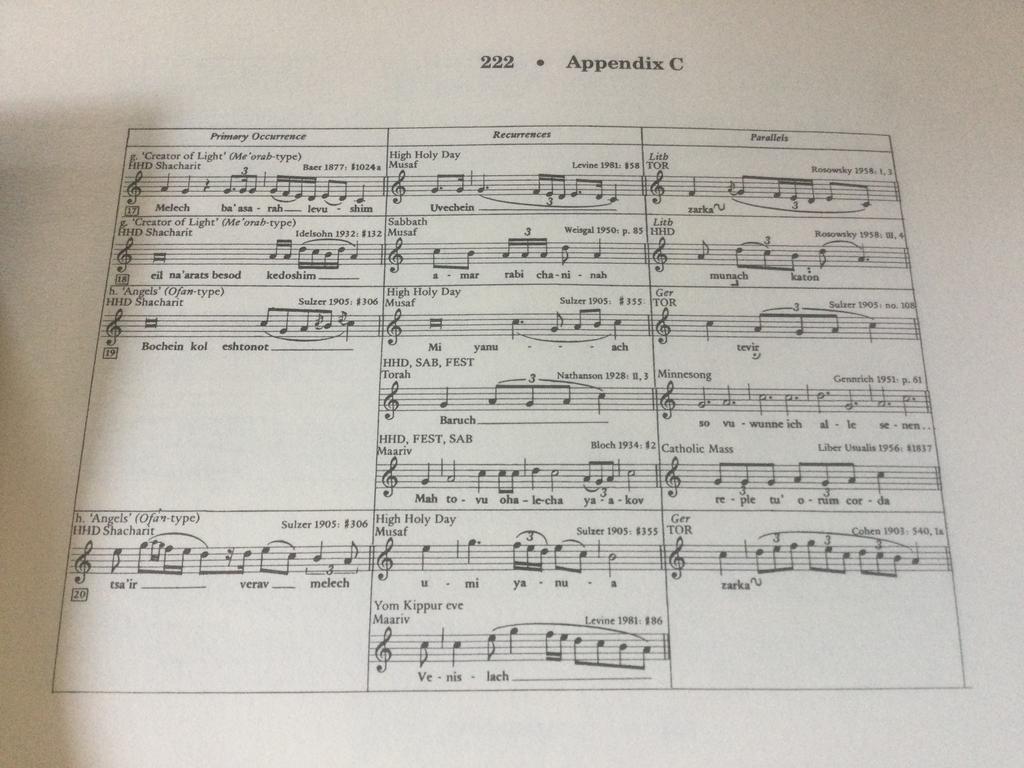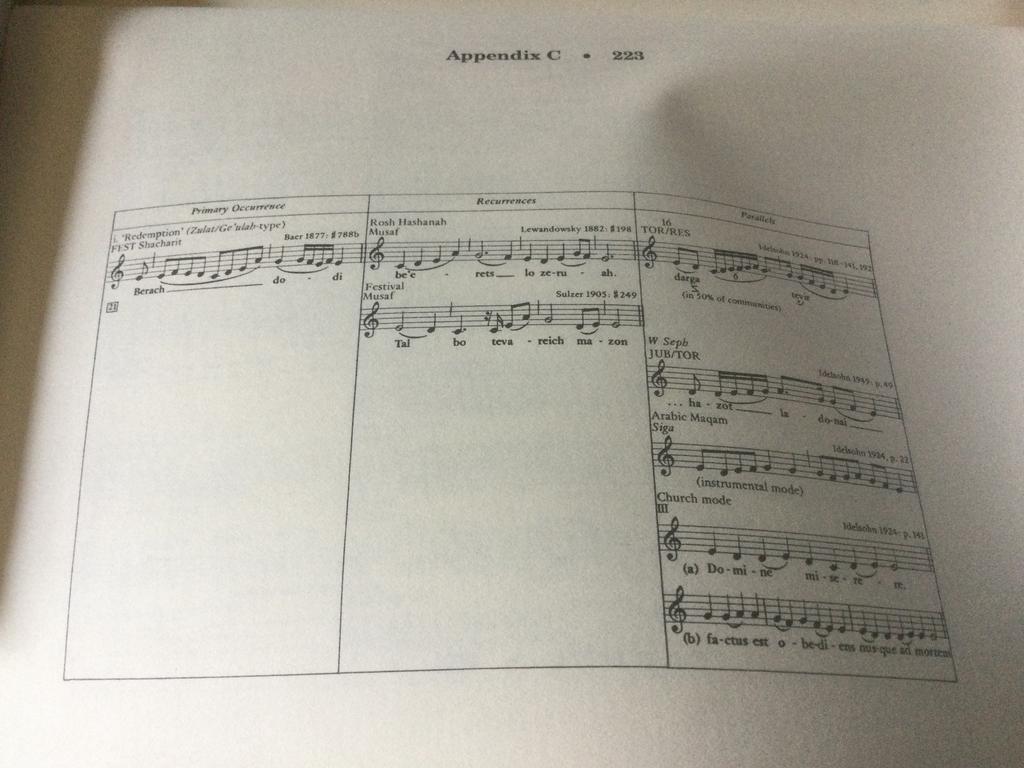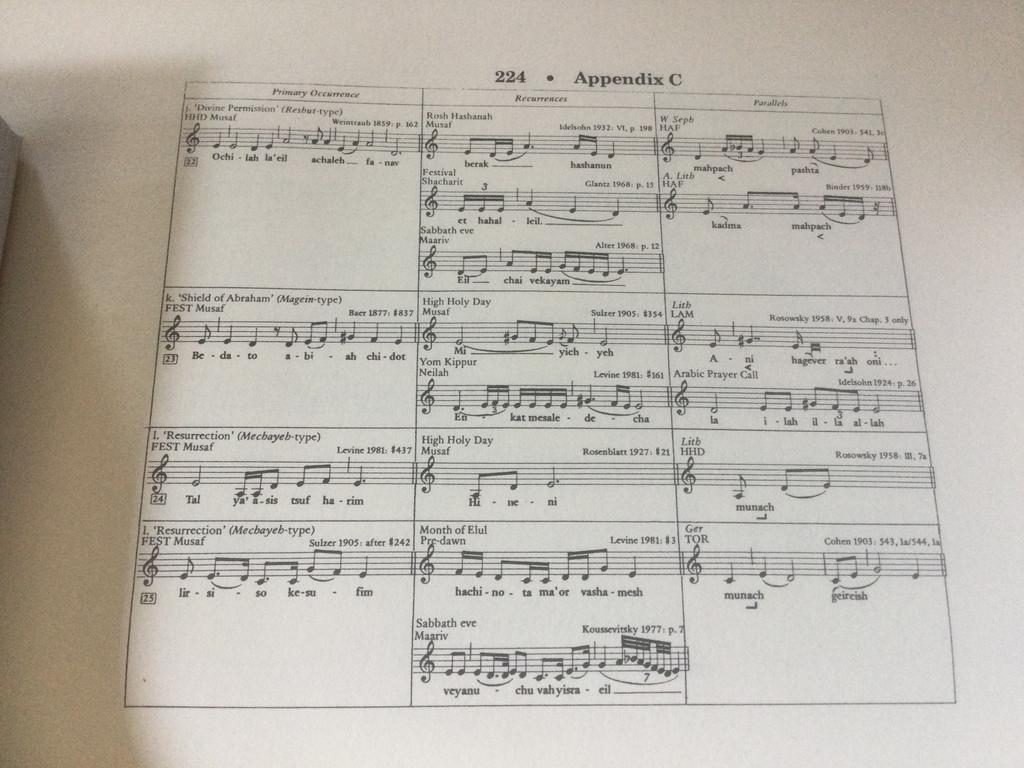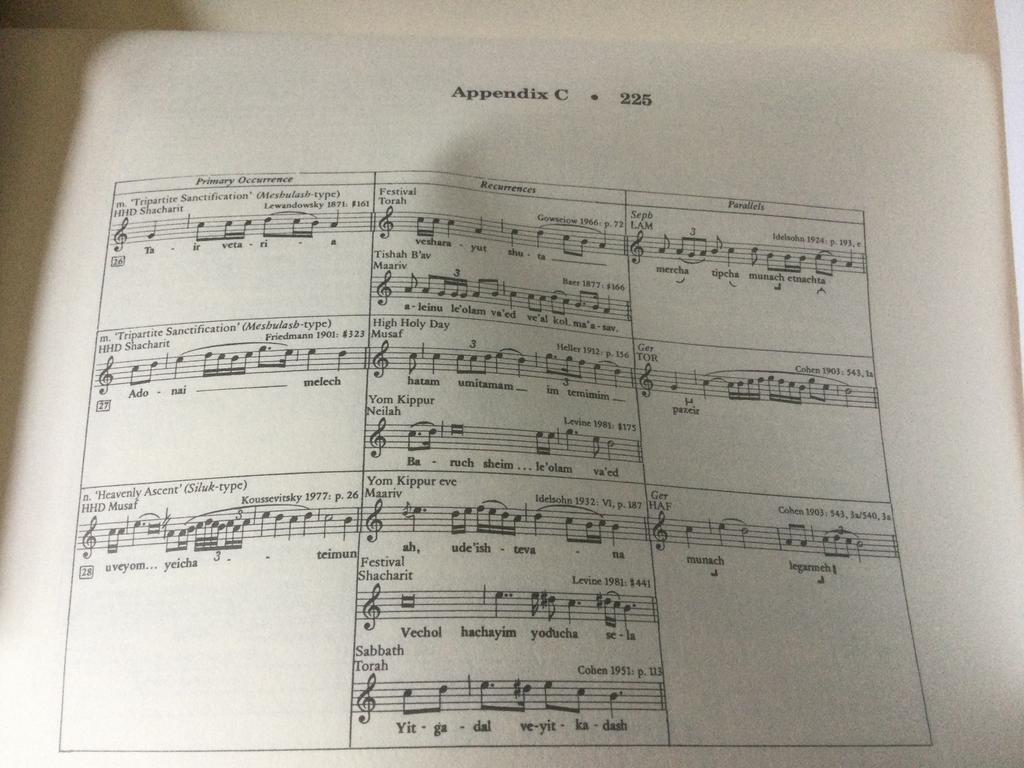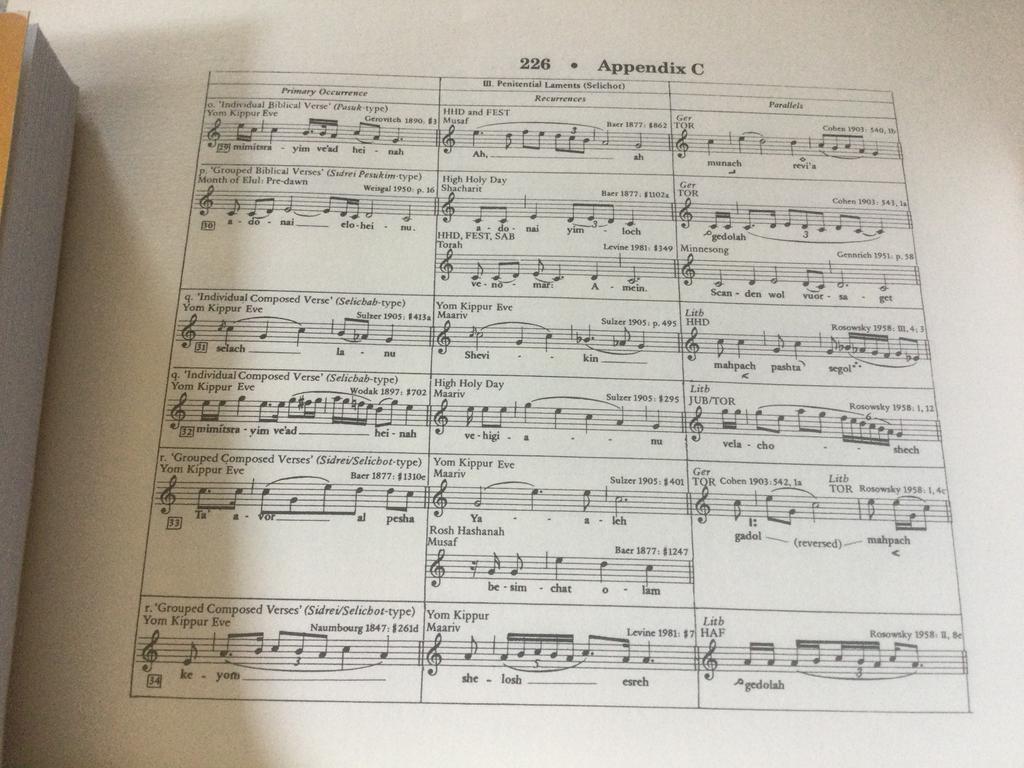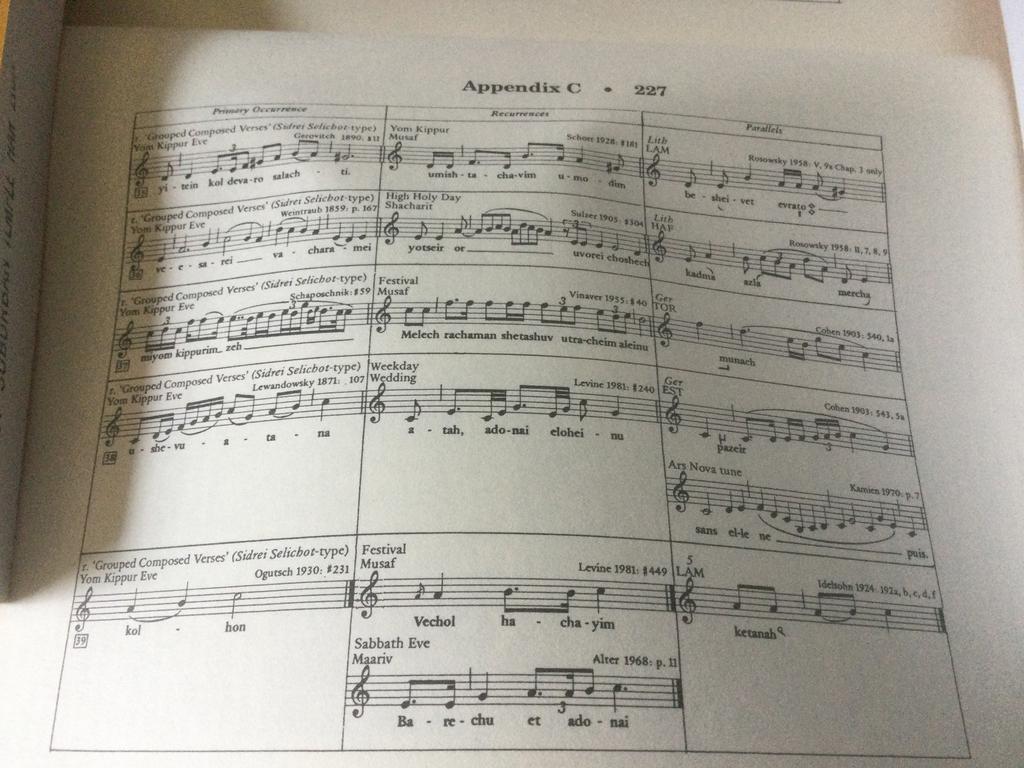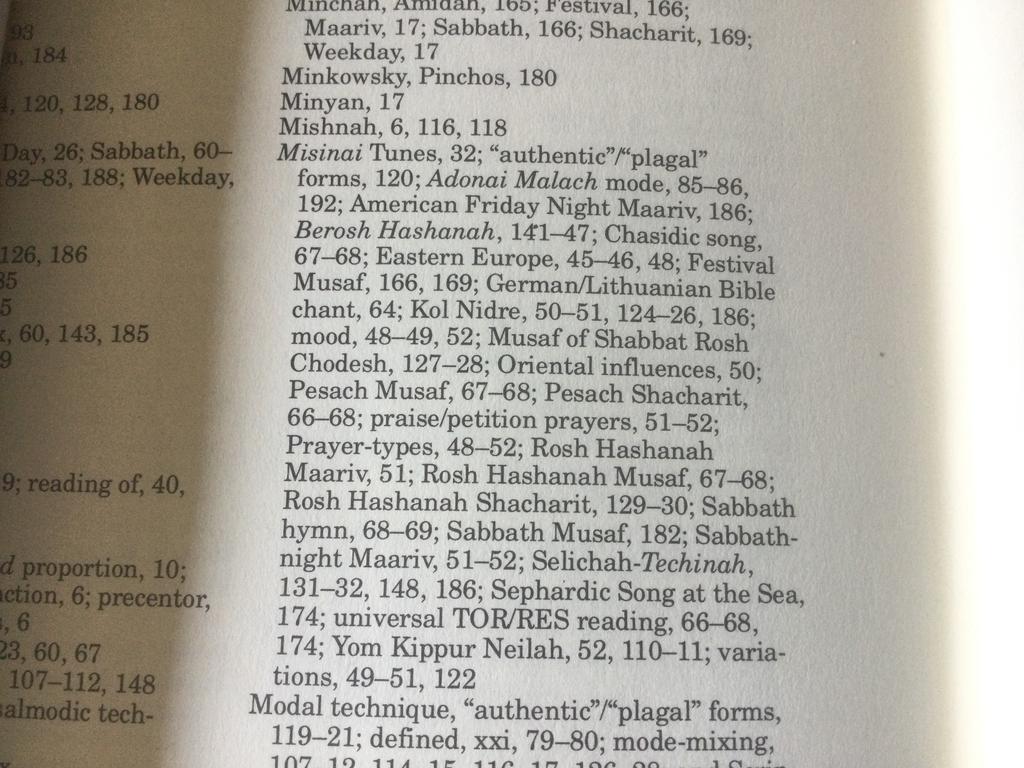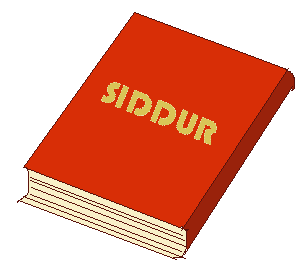Comparing High Holiday and Shabbat Services “on one foot”:
Shabbat services happen every week on Friday evening and Saturday. High Holiday services happen once a year on the Rosh Hashanah (the Jewish new year) and Yom Kippur (the Day of Atonement). The structure of both are the same, and there are also some differences in what happens within that structure. The nusach, the way of chanting the prayers, is different (as is the Torah trope), and that’s one way of differentiating when the same prayers are being done at different "sacred calendar" moments. Additionally, "MiSinai tunes", tunes that are considered so old that they go back to Mt. Sinai (but really date to the Middle Ages), are found throughout the High Holiday service (examples would be "Kol Nidrei", "Ashamnu", "The Great Aleinu", and "Avinu Malkeinu").
Shabbat Evening Services
- Shabbat evening services start with Kabbalat Shabbat, a set of psalms (plus "Yedid Nefesh" and "L’cha Dodi") meant to welcome Shabbat.
- Ma’ariv starts with Barchu (the call to worship)
- Then there is a Creation blessing ("HaMa'ariv Aravim"), a Revelation blessing ("Ahavat Olam"), the Shema, and a Redemption blessing ("Mi Chamocha").
- After that is the (silent) Amidah, followed by a mini-repetition.
- The service ends with Kiddush, Aleinu, Mourner’s Kaddish, and something at the end like Yigdal
Rosh Hashanah Evening Services
- (If it’s Shabbat, we have a truncated Kabbalat Shabbat consisting of Psalms 92 and 93 because we are already in a joyous mood.)
- The only changes in the liturgy are that instead of V’shamru (Exodus 31:16-17) at the end of Redemption blessing, there is a different Biblical quote for Rosh Hashanah (Psalm 81:4-5) (preceded by V'shamru if it's also Shabbat).
- The Amidah has an insertion in the first "Avot" blessing ("Zochreinu l'chayim") and in the second "Gevurot" blessing ("Mi chamocha"). It also contains a different "Fourth Blessing", referring to Rosh Hashanah instead of Shabbat.
- (If it's Shabbat, we have the mini-repetition of the Shabbat Amidah.)
- Also, there’s a different Kiddush, using a different tune (with insertions for Shabbat if necessary), and with the Shehechiyanu blessing at the end.
- Like Shabbat services in the month preceding Rosh Hashanah, Psalm 27 is said at the end of this service before the last prayer (see here for more on this psalm: https://www.sefaria.org/sheets/505950?lang=bi).
Yom Kippur Evening Service
- The Yom Kippur evening service is often called "Kol Nidrei" because it starts with "Kol Nidrei" and the prayers surrounding that prayer (for more about "Kol Nidrei", see here: https://www.sefaria.org/sheets/344251?lang=bi).
- We wear a tallit / tallis for this service
- (If it's Shabbat, we add Psalms 92 and 93 as a nod to Shabbat)
- The service is then the same as Rosh Hashanah until we get to the Biblical quote for the day before the Amidah. For Yom Kippur it is Leviticus 16:30 (and V'shamru is done too if it's also Shabbat).
- The silent Amidah is similar to the Rosh Hashanah one, with the addition at the end of "Ashamnu" and "Al Cheit" and a few surrounding prayers.
- (If it's Shabbat, we add the mini-repetition of the Shabbat Amidah).
- Instead of repeating the Amidah (since it's an evening service), we next do the first "Slichot Section" that will be the hallmark of Yom Kippur services, preceded by "Ya'aleh Tachanuneinu" and "Ki Hinei Hachomer". Highlights of the Slichot Section include: the Thirteen Attributes, "Sh'ma Koleinu", "Ki Anu Amecha", "Ashamnu", and "Al Cheit".
- At the end of this particular Slichot Section, we do "Mi She'ana" (see here for more on this: https://www.sefaria.org/sheets/575517?lang=bi).
- The service ends with "Avinu Malkeinu" (see here for more on this: https://www.sefaria.org/sheets/428906?lang=bi), except on Shabbat, before going into the final prayers of "Aleinu", "Mourner's Kaddish", Psalm 27, and "Yigdal".
Shabbat Morning Services
- Shabbat morning services begin with the Birchot HaShachar and P'sukei D'zimra sections, prayers and psalms to get us in the mood to pray to G-d
- The Shacharit section starts with Barchu (a call to worship), followed by a Creation prayer ("Yotzer Or"), a Revelation prayer ("Ahava Rabba"), the Shema, and a Redemption prayer ("Mi Chamocha"). After this comes the Amidah.
- The Torah service contains prayers for taking out the Torah, the reading of the Torah and Haftarah, and then prayers for returning the Torah.
- Finally, Musaf has another Amidah and the conclusion prayers of "Ein Keloheinu", "Aleinu", "Mourner's Kaddish", and "Adon Olam".
Rosh Hashanah Morning Services
- The service starts off the same on Rosh Hashanah as on Shabbat, though the nusach is different.
- There is an extra psalm added before “Baruch She’amar” (Psalm 8)
- The transition from the P'sukei D'zimra section to the Shacharit section starts at "Hamelech" instead of "Shochein Ad"
- (If it's Shabbat, "Eil Adon" is added.)
- The Rosh Hashanah Amidah, when done silently, has an extra line in the first ("Avot") blessing ("Zochreinu l'chayim") and in the second ("G'vurot") blessing ("Mi chamocha").
- When the Rosh Hashanah Amidah is repeated, it has a number of insertions before getting to the Kedushah. These are generally piyyutim, liturgical poems.
- After the Amidah, there is "Avinu Malkeinu" unless it's Shabbat.
- The Torah service contains the Thirteen Attributes before taking out the Torah, unless it's Shabbat
- After the Haftarah, but before the Torah is returned, the shofar is blown, unless it's Shabbat (in which case we skip the whole "Shofar Service").
- When returning the Torah, Psalm 24 ("L'David Mizmor") is sung when bringing the Torah around, unless it's Shabbat in which case Psalm 29 ("Mizmor L'David") is sung
- The Musaf Amidah, both the silent and repeated versions, has an extra 3 sections: Malchuyot, Zichronot, and Shofarot, each with a set of 10 verses on that topic.
- Before the repetition of the Musaf Amidah, the leader chants "Hineni"
- In the repetition of the Musaf Amidah, between the first two blessings and the Kedusha "Unetaneh Tokef" is added (see here for more on this: https://www.sefaria.org/sheets/254607?lang=bi)
- After the Kedushah, "V'chol Ma'minim" is done.
- At the end of the Amidah, before "Kaddish Shalem" we do "Hayom"
- The service thereafter is like the Shabbat service.
Yom Kippur Morning Service
- The Yom Kippur morning service is very much like the Rosh Hashanah morning service with the following changes:
- The extra psalm added before “Baruch She’amar” is Psalm 51.
- The Shacharit silent Amidah has "Ashamnu" and "Al Cheit" at the end, with a few prayers around them
- The repetition of the Shacharit Amidah has a "Selichot Section" at the end
- After the repetition of the Shacharit Amidah there's an "Avinu Malkeinu" unless it's Shabbat
- (After the Haftarah, on Shabbat "Y'kum Purkan" is recited.)
- Either after the Haftarah or at some other point thereafter, the Yizkor section is added to remember those deceased whom we are thinking about at this time
- Before the Musaf repetition's "Selichot Section", the Martyrology section is added, followed by the Avodah section recalling how Yom Kippur was in the Talmud (these may be in different places based on the version of the machzor)
- The service ends with "Kaddish Shalem", but not "Aleinu" or Mourner's Kaddish (one of only 2 services in the year to not end with "Aleinu")
Shabbat Afternoon Service
- The Shabbat afternoon service starts with Ashrei, followed by "Uva L'Tziyon"
- Next there's a Torah service, reading the beginning of the following week's Torah portion
- Finally there's an Amidah, followed by "Aleinu" and the Mourner's Kaddish
Rosh Hashanah Afternoon Service
- It is similar to Shabbat, with the following changes:
- There is only a Torah service if it is also Shabbat
- The Amidah has a Rosh Hashanah section in the middle instead of a Shabbat section
- We sing "Avinu Malkeinu" after the Amidah if it isn't Shabbat
Yom Kippur Afternoon Service
- The Yom Kippur afternoon service is similar to the Rosh Hashanah one, with the following changes:
- We start immediately with the Torah service
- Not only is there a Torah reading, but there is a Haftarah (the Book of Jonah)
- The silent Amidah ends with "Ashamnu" and "Al Cheit" along with their surrounding prayers
- The repetition of the Amidah has a "Selichot Section" at the end
- After the Amidah is repeated we do "Avinu Malkeinu" unless it's Shabbat
- The service ends with "Kaddish Shalem", but not "Aleinu" or Mourner's Kaddish (the 2nd of only 2 services in the year to not end with "Aleinu")
Neilah
Bonus service! This service has no parallel on Shabbat or Rosh Hashanah. Here's what's in it:
- "Ashrei" is at the beginning, followed by "Uva L'Tziyon" (these would normally start Mincha / the Afternoon Service, but Yom Kippur Mincha is like an extension of the morning service)
- Silent Amidah, ending with "Ashamnu" and "Al Cheit" along with their surrounding prayers
- "Eil Nora" before the Repetition of the Amidah
- The fifth and final "Selichot Section" of Yom Kippur is in the Repetition. This one starts with "P'tach Lanu Sha'ar", because we want the "gates of heaven" to receive our last prayers for forgiveness. Also at the beginning of this "Selichot Section" are "Eknat m'sal'decha", "Yisrael nosha", "Yachbi'einu", and "Yashmienu", all asking G-d to accept our prayers.
- The repetition of the Amidah ends with "Avinu Malkeinu", even on Shabbat.
- The Kaddish Shalem is usually done with a bouncy "Chassidic Kaddish". While some use this for every High Holidays Kaddish Shalem, it is more powerful if it is saved for the very end of Neila.
- Neila ends with a call and response of the Shema, reciting "Baruch Shem k'vod machluto l'olam va'ed" three times, reciting "Adonai hu ha-elohim" seven times, and blowing a t'kia g'dola on the shofar.
- After Neila is a weekday Ma'ariv / Arvit evening service and then Havdalah (and then we eat). The blessing over spices is only added on Shabbat.
MiSinai Tunes Used for the High Holidays
These are tunes so old that they are considered to go back to Mt. Sinai. In reality, they were Medieval (1200-1500) tunes from the Rhineland that spread to Eastern Europe -- these tunes that were used so commonly throughout the continent that they became considered to go back to Mt. Sinai. Cantor Max Wohlberg, the founder of the Cantors Assembly and Cantors Institute, identified 60 MiSinai tunes in use durnig the High Holidays; other scholars think that there are only 12-20. For more information, see: https://www.encyclopedia.com/religion/encyclopedias-almanacs-transcripts-and-maps/mi-sinai-niggunim and https://images.shulcloud.com/4182/uploads/Archives/MiSinaipresentation082320.pdf . Cantor Joseph Levine thoroughly treats this in his book Synagogue Song in America (Whitecliffs Media Company, 1989), identifying 40 MiSinai tunes. Here are a few of the most common ones.
Cantor Azi Schwartz of Park Avenue Synagogue in New York City chants the "MiSinai tune" for "Aleinu" as it is done at Rosh Hashanah and Yom Kippur Musaf (though not as it is done at the end of every High Holiday service besides Yom Kippur Musaf).
This is the traditional "MiSinai" tune for Ashamnu (from every Yom Kippur service), done a little faster than usual. Note that some versions say "tafalnu shaker" instead of "tafalnu sheker".
This is "Kol Nidrei" from the Yom Kippur evening service, done to the "MiSinai tune". There are common variations that have developed over the last 600 years or so, both in choral versions and in solo versions. This version is being sung by Cantor Rabbi Angela Buchdahl of Central Avenue in New York City.
This is "Mi She'ana", from the Yom Kippur evening service. Cantor Neil Schwartz sings the "MiSinai tune" for this prayer.
This is the "MiSinai tune" for "Ochila LaEil", from the Rosh Hashanah and Yom Kippur Musaf Amidah before the extra sections (Malchuyot and Avodah). You can also find it here: https://www.youtube.com/watchyv=C4B6jqlGjoA&list=PLMvSHUUlEFOAvb8X37WghEtGi73BnsjtR&index=49
This is the "V'al Kulam" refrain of "Al Cheit", coming up in each of the Yom Kippur services. This is the "MiSinai tune".
Many consider the "Avot" and "G'vurot" blessings of the Rosh Hashanah and Yom Kippur Amidah to be "MiSinai tunes". Those are done here by Cantor Sarah Myerson, 0:00-3:56.
"Avinu Malkeinu" (in Hebrew) has a "MiSinai tune". This video of Australian Jewish Bibi Shapiro singing an English version of “Avinu Malkeinu” in August 2020 went viral. He was invited to lead Avinu Malkeinu for Central Synagogue in New York, which you can see here: https://www.youtube.com/watch?v=1T8otsYIutY
This is the "MiSinai tune" for Eil Nora, done before the repetition of the Amidah of Nei'la. It is a rare Spanish-Portugugese tune that has acquired "MiSinai" status. Here it is being chanted by Cantor Neil Schwartz.
The High Holiday Shacharit Barchu through Yotzer Or and Or Olam is a "MiSinai" section, here chanted by Cantor Neil Schwartz.
The Chatzi Kaddish at the start of High Holidays Shacharit is also a MiSinai tune, here chanted by Cantor Neil Schwartz.
This is the “Hashem Melech” piyot from the repetition of the Rosh Hashanah Shacharit Amidah. It’s a “MiSinai tune” chanted by Cantor Neil Schwartz.
This is the “Uv’chein” section of the Rosh Hashanah and Yom Kippur Amidah after the Kedushah.
Here is “Ashamnu” with the prayers before and after it, from the Yom Kippur Selichot Section.
Here is the “Enkat” prayers in N’ila, sung by Cantor Neil Schwartz.
Appendix: MiSinai Tunes
